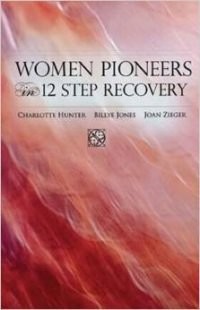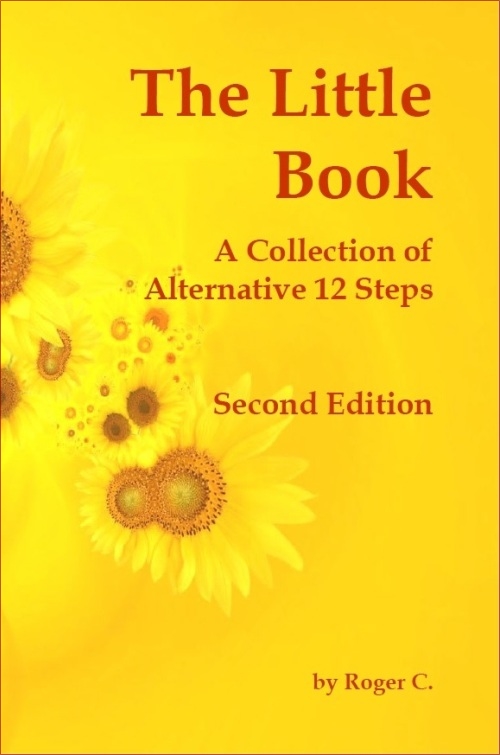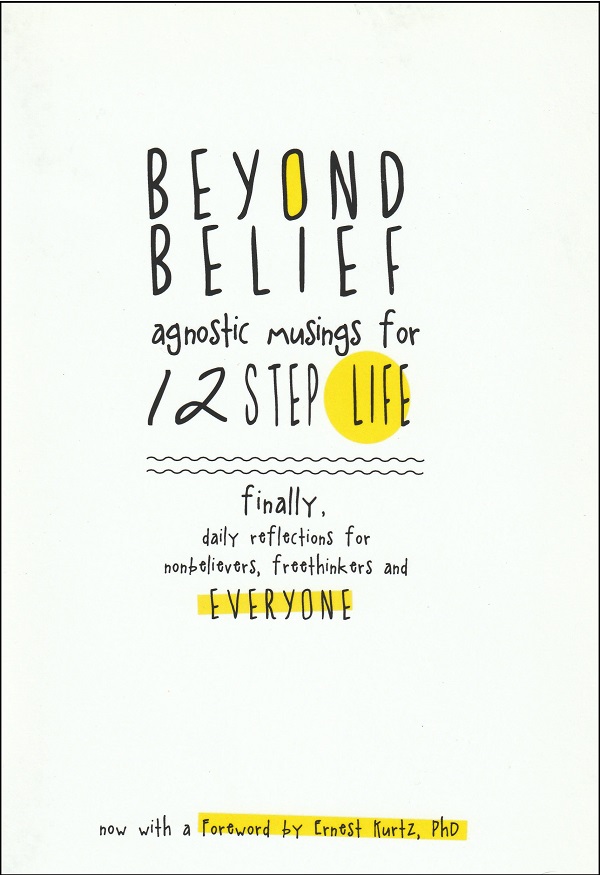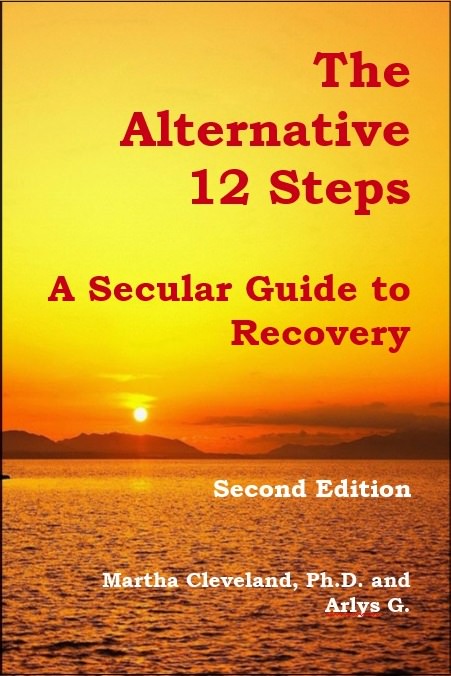Anne Smith

For some reason, we alcoholics seem to have the gift of picking out the world’s finest women.
Dr. Bob Smith
By bob k
“In 1898, Anne Robinson Ripley was spending a holiday with a college friend in St. Johnsbury, Vermont, where she met Robert Holbrook Smith…. She was small in stature, reserved in temperament.” (Women Pioneers in 12 Step Recovery, Hunter, Jones & Zieger, pp. 2-3) She met her future husband at a dance in the gym of the St. Johnsbury Academy, where he was a senior…
Anne Ripley “had a cheerfulness, awareness and calm that were to remain with her throughout the years. She had been reared within a family of railroad people. It was a very sheltered atmosphere, although there wasn’t much money at the time. Anne, who abhorred ostentation and pretense, always pointed out that she attended Wellesley College on a scholarship, because her family couldn’t have afforded to send her there otherwise”. (Dr. Bob and the Good Oldtimers, p. 16)
A Whirlwind Courtship
The high school dance began a “whirlwind” courtship that was to last 17 years, with the Smiths eventually getting married in 1915. We are left to speculate about the many possible reasons for the lengthy delay. “There were years of schooling, work, and internship ahead for Bob. There was also the possibility that Anne had a healthy fear of entering the state of matrimony with a drinking man. Perhaps she waited until Bob gave evidence of being sober for a time before she agreed to marry him.” (Oldtimers, pp. 16-17)
 Dr. Bob was about one year sober when the couple were wed in the home of Anne’s mother on January 25, 1915.
Dr. Bob was about one year sober when the couple were wed in the home of Anne’s mother on January 25, 1915.
At that point, there were only two possibilities: Anne either “believed he was sober for good, or perhaps she was just tired of waiting… The first three and a half years of this married life were ideal… Dr. Bob continued to stay sober.” (Women Pioneers, p. 4)
It is worth noting that the history seems to be telling us that Dr. Bob stayed sober from early in 1914 to well into 1918. He did this without steps, of course, and without calling upon God. It’s an interesting anomaly, countering the folk wisdom of AA fundamentalists.
We Are Fam-ily
Dr. Bob had brought his wife home to 855 Ardmore Ave. in Akron. “The $4,000 house was new then, a two-story clapboard structure with large airy rooms.” (Oldtimers, p. 29) For a physician, it was a starter home at best, but the Smiths never moved on, although they came very close to losing the house to foreclosure.
With Bob’s professional life going smoothly, and his practice growing, the Smiths became parents in 1918. The year of Robert Smith Jr.’s birth was also the year the 18th Amendment, Prohibition, was passed. “At the prospect of the whole country going dry, ‘I felt quite safe,’ Bob recalled. A few drinks at that point would make little difference… His thinking, if not quite logical (except by alcoholic logic), was quite typical at that time.” (Oldtimers, pp. 31-32)
“Again it was the old, insidious insanity – that first drink.” (BB, p. 154)
After starting out moderately, he soon drifted out of control again. In spite of the problems stemming from Bob’s drinking, five-year-old Sue was adopted. Anne, then in her mid-forties, had been advised that she could not have any more children. Sue and “Smitty” were about five months apart in age.
Drunken Daddy Dearest
The children remembered their father “as irritable and cross when he was under the influence. They were ashamed of his abject slavery to booze and sympathized with their mother, who was trying to hold the penniless family together, praying that her husband would somehow find an answer to his problem”. (Women Pioneers, p. 8)
Anne Smith blamed her mother-in-law for her husband’s drinking. The wife of Judge Smith was “a stern, tight-lipped, churchgoing lady who busied herself with the countless social and religious activities of St. Johnsbury’s towering, gray stone North Congregational Church. “‘Grandma Smith was a cold woman,’ said Sue.” When free of his stern upbringing, Anne thought, Bob had “cut loose”.
By 1933, the family of the drunken physician was in dire straits, as were most Americans in the throes of the Great Depression. More often than not, potato soup was the dinner entrée in the Smith household. Only the mortgage moratorium saved the family home.
Of course, Anne Smith tried to fix her husband in various ways such as extracting pledges that were rarely honored into a second day. “Mother always tried to frisk him when he came in… Like many another alcoholic, before, after, and yet to come, he was expert at obtaining and maintaining his supply”. (Oldtimers, p. 40)
The Oxford Group
In early 1933, Anne Smith began attending Oxford Group gatherings, and was soon dragging her guilt-laden husband along with her. Dr. Bob became an OG regular, and began to read what was suggested. “I gave the matter much time and study for the next two and a half years, but I still got tight every night nevertheless.” (BB, p. 178)
Anne Smith was a woman of faith, and she pressed on, but not without challenges. “Anne verged on a nervous crack-up, and their two children of course were greatly upset… Hope was a word they had come to avoid.” (AA Comes of Age, p. 69) At the age of 56, Anne took up smoking, possibly to graphically demonstrate to her husband the effects of his self-indulgence.
In the spring of 1935, Henrietta Seiberling “felt guided” that the Oxford should have a special meeting for Bob Smith. They were successful in getting the physician to confess, for the first time, his difficulty with alcohol. “I am a secret drinker, and I can’t stop.” (Oldtimers, p. 58) Later, the Oxford folks would see Bill Wilson’s role in Smith’s rehabilitation as only a minor one, as they, and God, were progressing nicely.
It was Seiberling, of course, who telephoned the Smiths about the rum hound from New York, who had found an answer to his alcohol problem. Her husband was too drunk to make the trek to the Seiberling Gatehouse that Saturday, but she wrangled his reluctant promise to go the next day for the now famous “Mother’s Day” meeting of 1935. Other than a final debauch a month later, Anne Smith’s husband never drank again.
Put More Water in the Soup
We’ve Got Company
Seiberling arranged for Bill to move to the Portage Country Club, Akron’s best, as the guest of her neighbor, John Gammeter. Lois was less than impressed to hear of her unemployed husband’s hobnobbing with the wealthy. “’There didn’t seem to be very much happening in the proxy fight… And I can’t say I liked thinking about his playing golf at this fancy country club, while I was working at Loessers.” (Bill W., Francis Hartigan, p. 83)
After a couple of weeks Bill moved in with the Smiths, and stayed until the end of August. The two men diligently searched for others to help, often lodging them in the already cash-strapped Smith home. “Progress in their work with alcoholics was not smooth… Once, when her husband and Bill had gone out… Anne found herself chased around her kitchen by a crazed ex-drunk brandishing her own butcher knife in his demand for alcohol.” (Not-God, Ernest Kurtz, p. 40)
 Grateful to have a sober husband, Anne Smith complained little. She “gathered guests in her arms, made them feel at home, served them endless pots of Eight O’clock coffee, moved her children out of their beds to put the drunks in, (and) read the Bible with them mornings”. (Getting Better: Inside Alcoholics Anonymous, Nan Robertson, p. 20) Her home a hostel for would-be AA members, Anne Smith was truly the “first mother of AA.” “Anne was especially effective in counselling wives… giving them hope.” (Women Pioneers, p. 2)
Grateful to have a sober husband, Anne Smith complained little. She “gathered guests in her arms, made them feel at home, served them endless pots of Eight O’clock coffee, moved her children out of their beds to put the drunks in, (and) read the Bible with them mornings”. (Getting Better: Inside Alcoholics Anonymous, Nan Robertson, p. 20) Her home a hostel for would-be AA members, Anne Smith was truly the “first mother of AA.” “Anne was especially effective in counselling wives… giving them hope.” (Women Pioneers, p. 2)
“She herself was ‘the sheltered place for people in trouble, a rod, a comforter,’ in her daughter-in-law’s memory.” (Not-God, p. 55) “Anne Smith…was also directly involved in trying to help other alcoholics. So were the wives of many of the other early members. In fact, Lois (Wilson) considered herself a member of AA as well as Al-Anon. According to her, all the wives who joined their husbands in working with alcoholics during AA’s formative years saw themselves as AA members.” (Hartigan, pp. 70-71)
The Drunks Are Wrecking the Furniture
By the autumn of 1939, only the Akronites remained under the umbrella of the Oxford Group. The Groupers were not impressed with the alcoholics’ book, which they viewed as commercialization. Clarace Williams who, with her husband, had been hosting a Wednesday night meeting, was upset about what was happening to Oxford Group principles, and her home. She shared these concerns with Henrietta Seiberling. In October of 1939, the alcoholics pulled out suddenly, and the alcoholics moved temporarily to the Smith home. In January, the location moved to King’s School.
“There were some hot conversations on the telephone; it was a 3-way thing… the women decided it.” (Not-God, p. 81)
Legacy
The book of James was a favorite of the mother of AA.
14 What does it profit, my brethren, if someone says he has faith but does not have works? Can faith save him? 15 If a brother or sister is naked and destitute of daily food, 16 and one of you says to them, “Depart in peace, be warmed and filled,” but you do not give them the things which are needed for the body, what does it profit? 17 Thus also faith by itself, if it does not have works, is dead. 18 But someone will say, “You have faith, and I have works.” Show me your faith without your [a] works, and I will show you my faith by my [b] works.
Anne Smith was no hypocrite as she continued to support her husband. Both were dedicated to helping both drunkards and their spouses to recover from the horrible affliction that is active alcoholism. Emma K., who brought her husband to the Smiths for help with his drinking reported – “They were always doing things… for you. They couldn’t do enough for you.” (Oldtimers, p. 318) Emma, a nurse, spent a lot of time with Anne Smith. Vision was a problem for the co-founder’s spouse, and a cataract operation failed. Toward the end, Anne Smith could barely see, hardly walk, and her hands were crippled with arthritis.
A selfless woman, and not a complainer, Mrs. Smith did express disappointment at her husband’s lack of acknowledgement in New York. Dr. Bob was barely recognized – it was “all Bill”. Of course, in Ohio, the situation was reversed.
There can be little doubt that a plethora of tears were shed on June 1st, 1949, over the passing of Anne Smith. She had provided tremendous comfort to hundreds and hundreds of people. Henrietta Seiberling may not have over-reached in calling her a founder of AA.
People like her give religious people a good name.
This is one of the chapters in the book, Key Players in AA History by bob k.

























A remarkable woman. This book will be much appreciated, especially by those of us who have had similar family experiences!
Annette is also the author of a book, The Social World of AA – How it Works. A review of the book will be published on AA Agnostica, probably sometime in May.
I just ordered Annette’s book, rocketing her further upward on Amazon.com’s 5 million best seller list. It looks quite interesting!
The math question continues to make me nervous. Do you think I need therapy?
No question.
Annette, I’ve also ordered a copy of your book, which I will use as resource material for an article I’m in the process of writing on the “identification” of alcohol addicts within the Fellowship of A.A with each other. This, I believe, is the primary source of the healing dynamic among us. It’s been in play since Ebby went to Bill, and Bill to Dr. Bob, and both to Bill D., man on the bed, throughout the 80 history of the A.A. Fellowship.
And Nigel has ordered a copy and will be writing a review. Thanks, Nigel!
Bob, as always…fabulous. I really like how you ended it.
My second time, Bob, to read this delightful, fact-filled story of Anne. Indeed, AA would not have been possible without the enabling assistance of wives like Anne and Lois, who encouraged the boys as well as keeping them in line when they wanted to make it a men’s club only.
And, I absolutely agree and salute you for pointing out that people like Anne Smith give religion a good name !~!~!
On another note, Roger, I hope you’re able to get an English transcript of the French TV program for those of us who don’t do French . . .
I love this Bob! There is probably more to tell in terms of what kind off wife Anne was and what kind of relationship they had. Another sterling job!!!
Thanks, Bob.
I think this is remarkable statement. It fits perfectly in my thinking along the lines of the long form of tradition 3:
If anyone suffered perhaps more so, the “second hand smoke” of alcohol disorders, it’s certainly our friends, employers and loved ones. Of the 8 times heartbreak or heartbreaking appear in the BB and 12+12, three of them are in To Wives. And although clearly written by Bill at least he was empathetic enough to identify it.
Drinking any amount for any length of time or personal problems with alcohol are not a requirement for membership, only a desire to stop is, as the third tradition says. And as Bill W brought out in step one of the 12+12, pointing out the ability to ‘raise one’s bottom’ to recognize alcoholism before the symptoms (alcohol addiction) get out of hand, is gate-widening.
AA is clearly a bait and switch fellowship of character building (and evangelism if one so choses) of which ‘not drinking’ is a sidebar, merely the bait and not even a rule. If I still suffer alcoholism without alcohol; i.e. self-centered fear, the stated pre-existing cause and condition, then whether or not I ever drank or not is moot in my mind.
As my friend Bill S. says, “Once I get a bottle out of my face I become an untreated Alanon” because I fit Alanon’s qualifier as a friend of people who are or have been affected by alcoholism however it is defined! Next time you’re in a meeting take a look around.
To be beaten by self-centered fear and its inherent symptoms, the common qualifier to both fellowships, if not actually all fellowships and all of humanity, is what truly unites us. It’s a mighty inclusive circle.